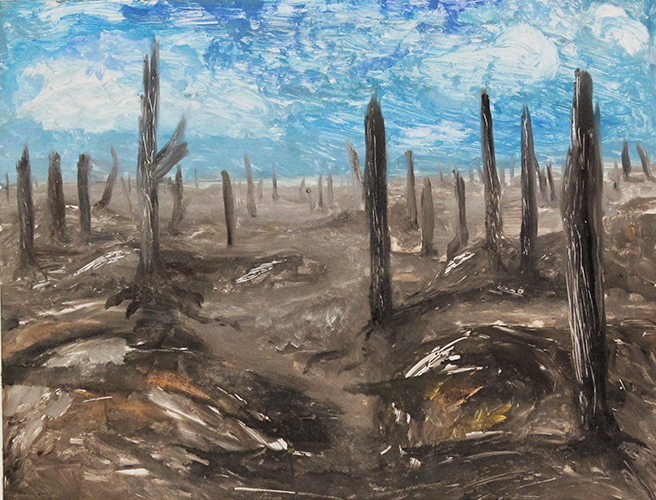Alexia Hall
In the Destruction Series I am examining the environmental destruction caused by humankind. I am interested in the notion that human beings, though individually frail, can cause such substantial destruction to the environment. These ideas are being explored through representations of destroyed environments, in which full-bodied characters are juxtaposed against the barren landscapes of human creation. The figures are naked, evoking a feeling of insecurity and defenselessness akin to the vulnerability of earths ecosystems. This topic addresses an issue that the United States Government has only begun responding to. I believe if these topics are not addressed, however uncomfortable, the future of humankind will be capricious. Humankind's devastation is not often visible here since it often occurs outside of our cultural sphere. The goal of this work is to draw the viewers' attention to their participation in what is a global catastrophe.
During the creation of my work, I was inspired by a variety of artists. Anslem Kiefer and Francisco Goya were two of the artists I focused on when doing research during the making of this series. I was most affected by Kiefer’s attention to texture and the mark making in his landscapes. To better understand how to achieve a sense of depth in my compositions, I looked to Goya, specifically his Disasters of War series. I researched Robert Longo’s mushroom cloud work, and how movements and major historical events influenced his life; this drew comparisons to my own interest in the world around me.
Sketches in charcoal or graphite were the starting point for the monotype series. Then, using traditional and non-traditional media such as acrylic, marker, ink, tea bags, coffee grounds, puffy paint, and clay, I produced additional iterations. Once satisfied, I began the painting process on plexiglass. I use oil paint as my medium because it spreads similarly to ink without drying quickly, and penetrates the paper, while leaving brushstrokes visible. To create spatial depth in the composition, the formal elements of value and texture are carefully considered. Finally, I print the plate. The dampened rag paper is laid over the plate first, followed by a clean sheet of newsprint and two blankets. The plate and blankets are then rolled through the printing press, and the paper is peeled back from the plexiglass to reveal the finished image.
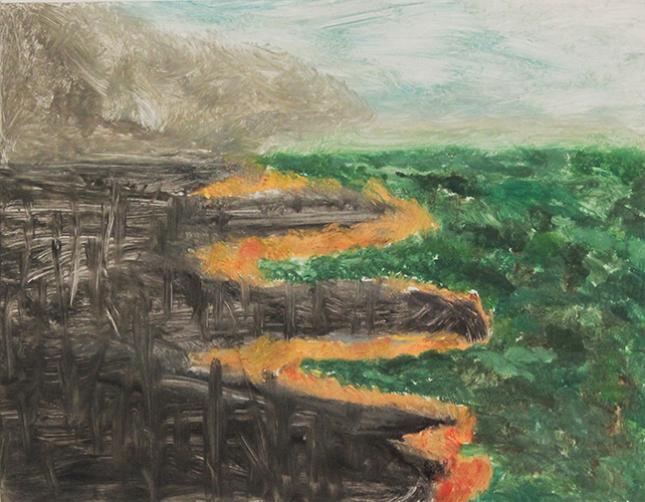 |
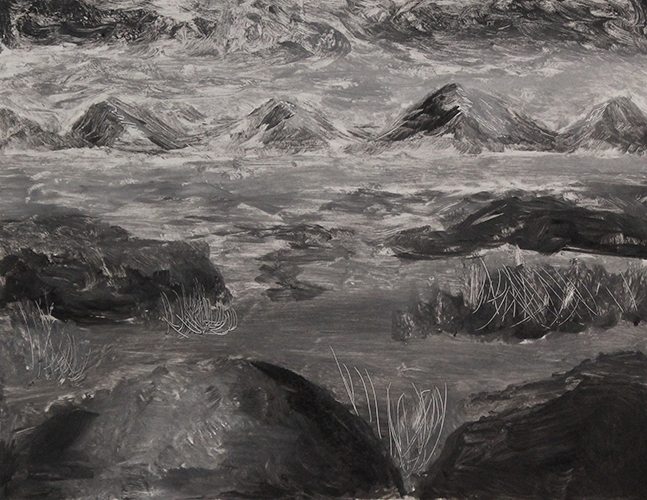 |
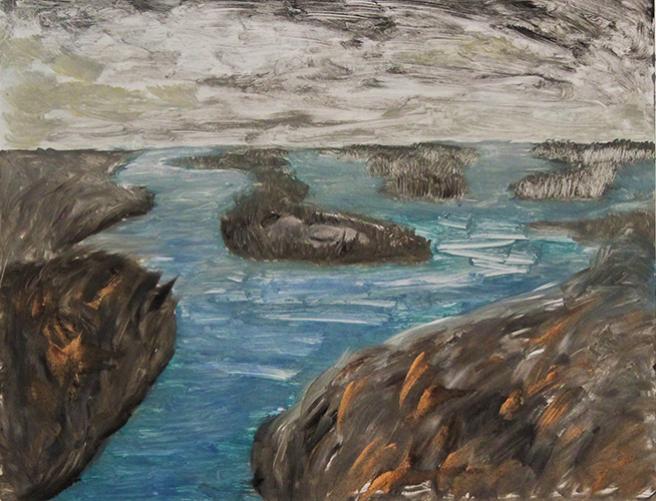 |
||
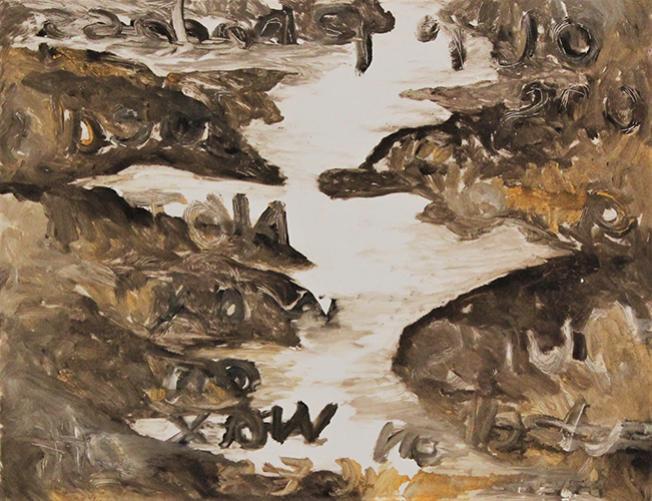 |
|
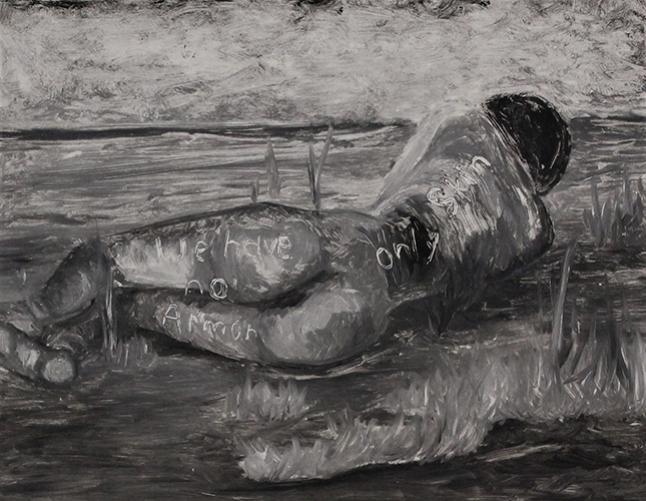 |
||
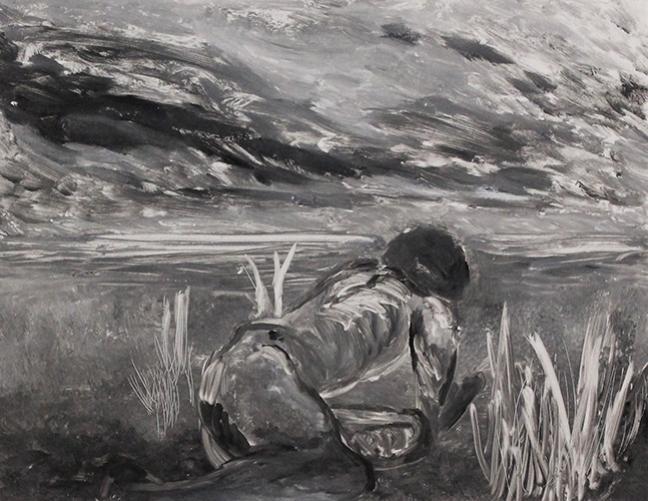 |
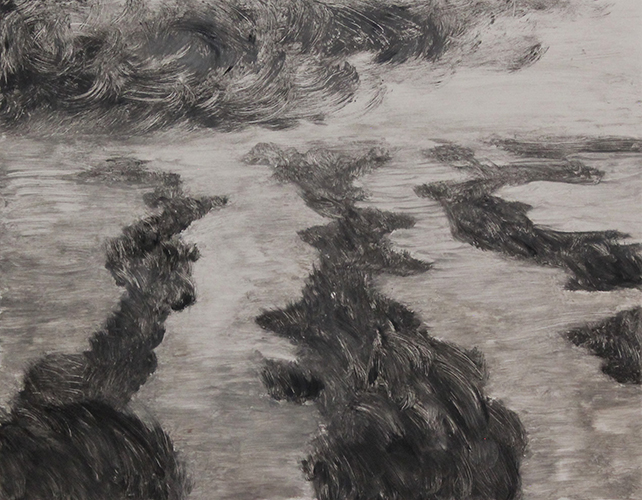 |
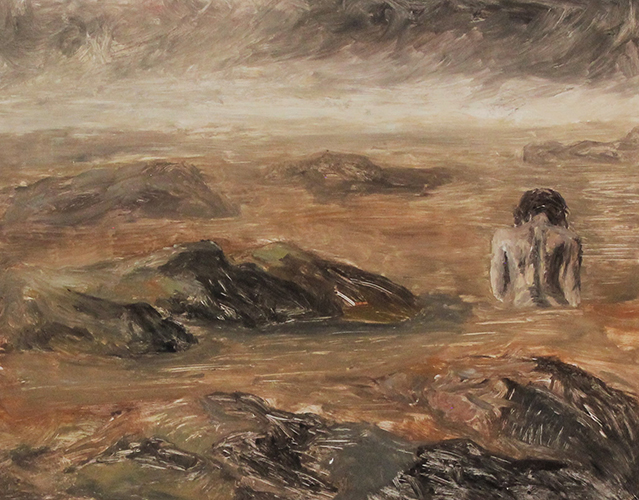 |
Contact Us
gallery@svsu.edu
(989) 964-2291(989) 964-2291
UAG Coordinator
Department of Art
Shaun Bangert, Chair
Office
University Art Gallery
Arbury Fine Arts Center
Contact Us:
To be added or removed on
postal mail or email:
gallery@svsu.edu

